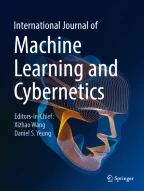Abstract
Alpha matting aims at estimating the foreground opacity matte in an image. It is critical to find the best known samples for foreground and background color of unknown pixels in color sampling-based matting approaches. Most matting approaches can only select color sample for each pixel each time, which prevent them from maintaining the same correlation in image pixels. In particular, they may fail to collect appropriate samples from complex images and thus lead to artifacts. In order to solve the problem, we present a correlation-based sampling method in which the image pixel correlation is employed in color sampling and optimal sample selection for the alpha matte estimation of the image. First, the foreground and background colors of sample set can completely cover the color of unknown pixels to avoid missing the true samples. This is accomplished by artificial immune network adaptively learning the image correlation in unknown pixels. Besides, we propose the sample selection process as a global optimization problem with image correlation. All unknown pixels are treated as a high-dimensional input variable, particle swarm optimization algorithms is employed to solve the global optimization problem selecting the best sample pairs for all unknown pixels. The experimental study on images dataset shows that image pixels correlation is effective to improve matting, and that our matting results are comparable to some recent approaches.
Similar content being viewed by others
Explore related subjects
Discover the latest articles, news and stories from top researchers in related subjects.References
Wang J, Cohen MF (2007) Image and video matting: a survey. Found Trends Comput Graph Vis 3(2):97–175
Chen X, Zou D, Zhou SZ, Zhao Q, Tan P (2013) Image matting with local and nonlocal smooth priors. IEEE Conf Comput Vis Pattern Recognit 9:1902–1907
Chen Q, Li D, Tang CK (2013) Knn matting. IEEE Trans Pattern Anal Mach Intell 35(9):2175–2188
Levin A, Lischinski D, Weiss Y (2008) A closed-form solution to natural image matting. IEEE Trans Pattern Anal Mach Intell 30(2):228–242
Singaraju D, Vidal R (2011) Estimation of alpha mattes for multiple image layers. IEEE Trans Pattern Anal Mach Intell 33(7):1295–1309
Wang J, Cohen M F (2007) Optimized color sampling for robust matting. In: CVPR2007, pp 1–8
Shahrian E, Rajan D, Price B, Cohen S (2013) Improving image matting using comprehensive sampling sets. Conf Comput Vis Pattern Recognit 9(4):636–643
Shahrian E, Rajan D (2012) Weighted color and texture sample selection for image matting. In: Computer vision and pattern recognition (CVPR), pp 718–725
Comaniciu D, Meer P (2002) Mean shift: a robust approach toward feature space analysis. IEEE Trans Pattern Anal Mach Intell 24(5):603–619
Gastal ESL, Oliveira MM (2010) Shared sampling for real time alpha matting. Comput Graph Forum 29(2):575C584
Zhu Q, Zhang Z, Song Z, Xie Y, Wang L et al (2013) A novel nonlinear regression approach for efficient and accurate image matting. IEEE Signal Process Lett 20(11):1078–1081
Zhu Q, Shao L, Li X, Wang L (2014) Targeting accurate object extraction from an image: a comprehensive study of natural image matting. IEEE Trans Neural Netw Learn Syst 26(2):185–207
He K, Rhemann C, Rother C, Tang X, Sun J (2010) A global sampling method for alpha matting. IEEE Conf Comput Vis Pattern Recogn 42:2049–2056
Berman A, Dadourian A, Vlahos P (2000) Method for removing from an image the background surrounding a selected object. US Patent 6,134,346
Yang M, Zhu P, Liu F, Shen L (2015) Joint representation and pattern learning for robust face recognition. Neurocomputing 168(C):70–80
Potetz B, Lee TS (2003) Statistical correlations between two-dimensional images and three-dimensional structures in natural scenes. J Opt Soc Am 20(7):1292–1303
de Castro LN, Von Zuben FJ (2001) aiNet: an artificial immune network for data analysis. Data Min Heuristic Approach 1:231–259
de Castro LN, Timmis JI (2003) Artificial immune systems as a novel soft computing paradigm. Soft Comput 7(8):526–544
Shi BY, Eberhart R (2010) A modified particle swarm optimizer. IEEE World Congr Comput Intell 6:69–73
Rhemann C, Rother C, Wang J, Gelautz M, Kohli P, Rott P (2009) A perceptually motivated online benchmark for image matting. In: IEEE Conference on Computer Vision and PatternRecognition, pp 1826–1833
Wang XZ, Ashfaq RAR, Fu AM (2015) Fuzziness based sample categorization for classifier performance improvement. J Intell Fuzzy Syst 29(3):1185–1196
Wang X (2015) Learning from big data with uncertainty editorial. J Intell Fuzzy Syst 28(5):2329–2330
Han Y, Xu C, Baciu G, Li M (2015) Lightness biased cartoon-and-texture decomposition for textile image segmentation. Neurocomputing 168:575–587
Lu Y, Lai Z, Fan Z, Cui J, Zhu Q (2015) Manifold discriminant regression learning for image classification. Neurocomputing 166(C):475–486
Acknowledgments
This work is financially supported by NSFC-Guangdong Joint Found (U1501254), Natural Science Foundation of China (61370102, 61202269, 61472089, 61572143, 61502108, 61502109), Natural Science Foundation of Guangdong province (2014A030306050, 2014A030306004, 2014A030308008) Key Technology Research and Development Programs of Guangdong Province (2012B01010029, 2013B051000076, 2015B010108006, 2015B010131015), Science and Technology Plan Project of Guangzhou City (2014Y2-00027), Opening Project of the State Key Laboratory for Novel Software Technology (KFKT2014B03, KFKT2014B23) the Fundamental Research Funds for the Central Universities, SCUT (2015PT022), Philosophy and social science project of Guangdong Provenience (GD14XYJ24) and Guangdong High-level personnel of special support program (2014TQ01X664).
Author information
Authors and Affiliations
Corresponding author
Rights and permissions
About this article
Cite this article
Yan, X., Hao, Z. & Huang, H. Alpha matting with image pixel correlation. Int. J. Mach. Learn. & Cyber. 9, 621–627 (2018). https://doi.org/10.1007/s13042-016-0584-1
Received:
Accepted:
Published:
Issue Date:
DOI: https://doi.org/10.1007/s13042-016-0584-1
